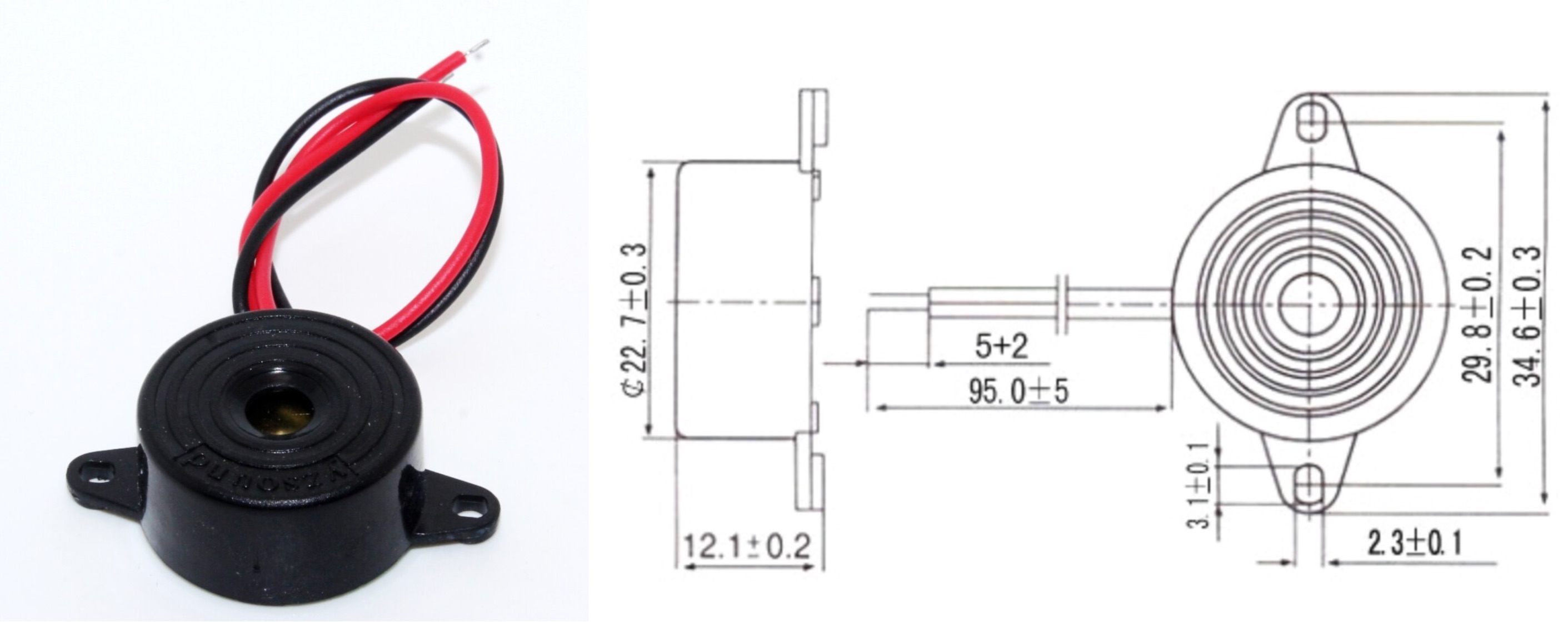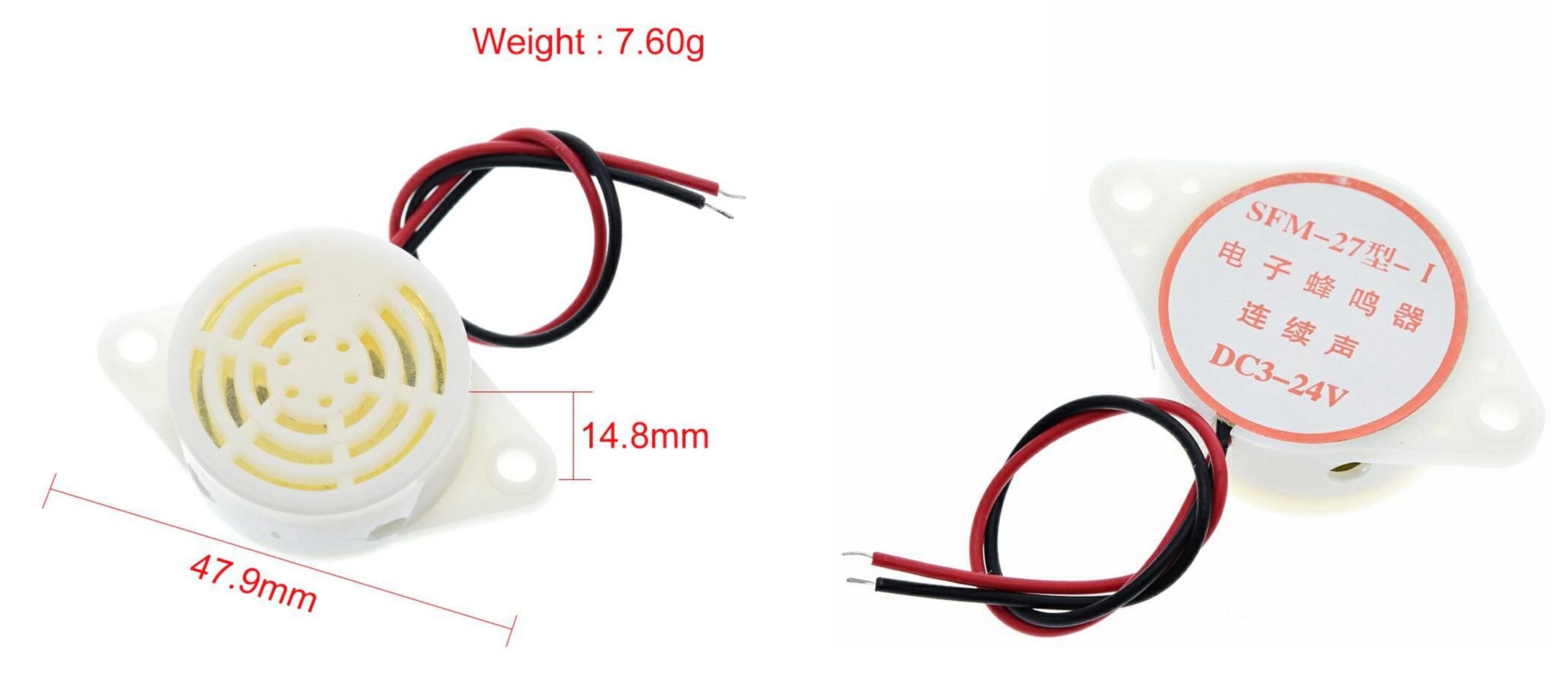#455 Piezo Transducers and Buzzers
Exploring techniques for driving piezo transducers and buzzer units for audio output.
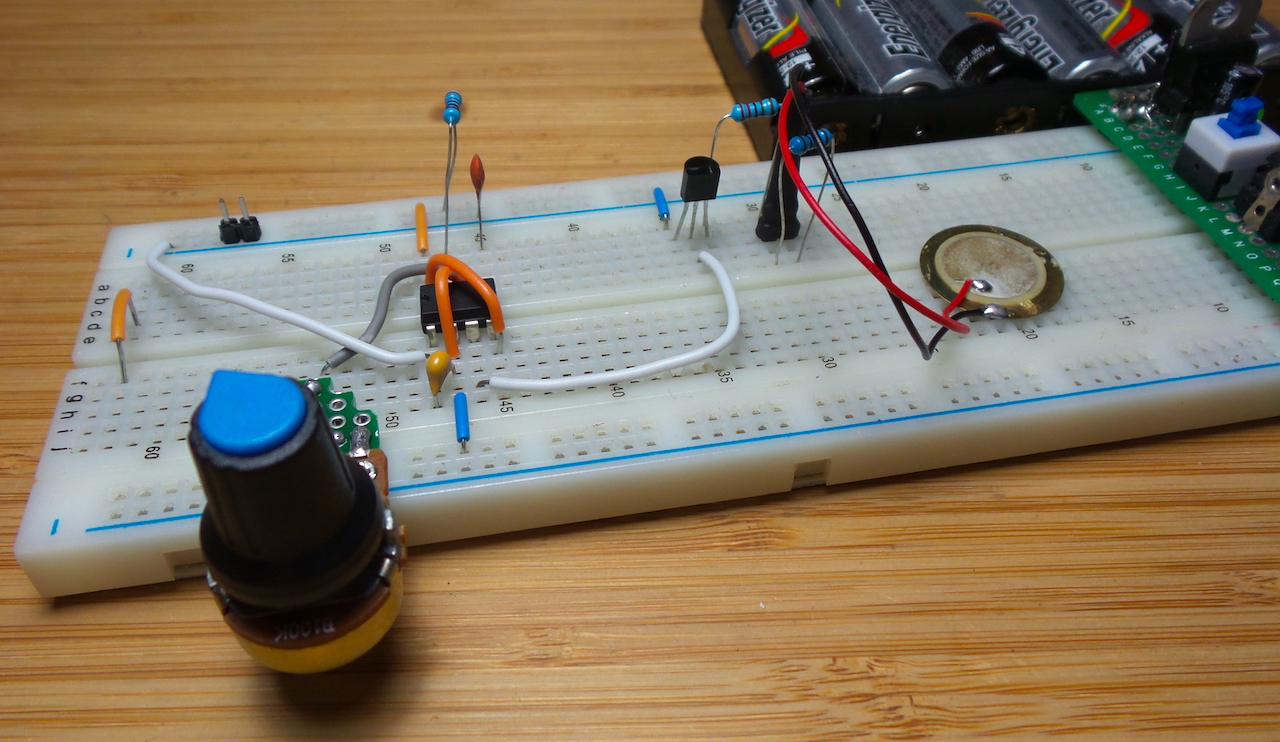
Here’s a quick demo..
Notes
Piezoelectric sensors for generating sound are commonly found in two form factors:
- indicator (aka buzzer): complete piezoelectric unit including circuit to produce sound
- just requires an applied voltage to produce sound - fixed frequency by default
- may be combined with external circuitry to mix/alter the sound and frequency
- transducer: a basic piezoelectric diaphragm/disk
- sometimes called a “passive” buzzer element
- can be used as an input transducer as well as for sound generation
- does not self-oscillate - requires external circuit to produce sound
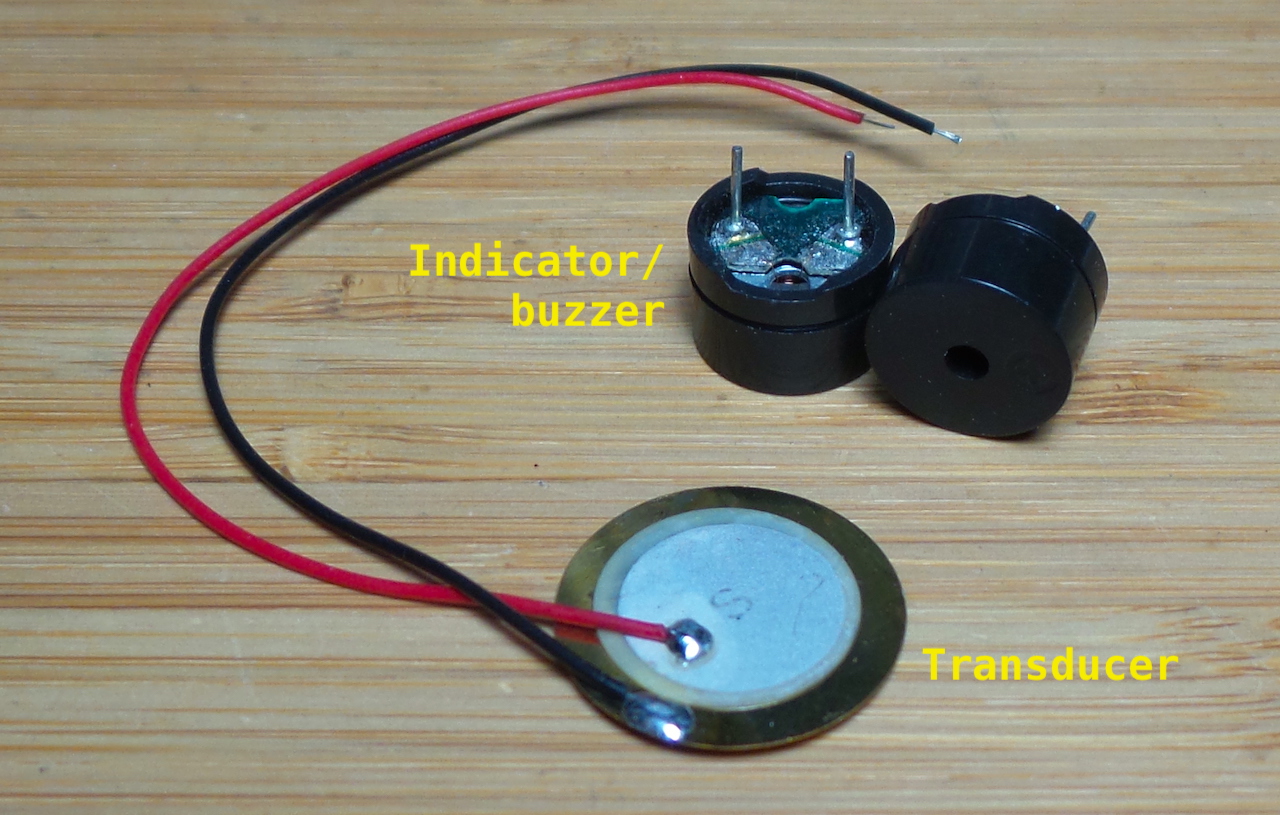
Driving Piezoelectric Indicators
Piezoelectric indicators (aka buzzers) are simple voltage-controlled devices. Typically used as alarms or action feedback indicators. They come in a range of forms - from the very cheap suited to breadboard experiments through to quality devices suited to security alarm installations.
Driving a piezoelectric indicator is simple - it just needs a voltage applied.
Common PCB Mount
Available for pennies and ideal for PCB or breadboard prototyping (however I have come across devices with leads that are far too thick to use on a breadboard without damaging it). It is usually OK to even drive a 3-5V component directly from a 20mA-limit GPIO pin
High Volume Alarms
Beefier devices are more suited to serious alarm purposes, for example this 95dB SPL Continuous Sound Beeper
- Buzzer Type: Piezoelectric
- Sound Pressure Level 95 dB
- Rate Voltage: 12V DC
- Operating Voltage: 3 - 24V
- Max Current Rating 10mA
- Frequency 3900±500Hz
- Drive Method: Drive Circuit Built in Mounting Holes
- Sound: “Di” Continuous
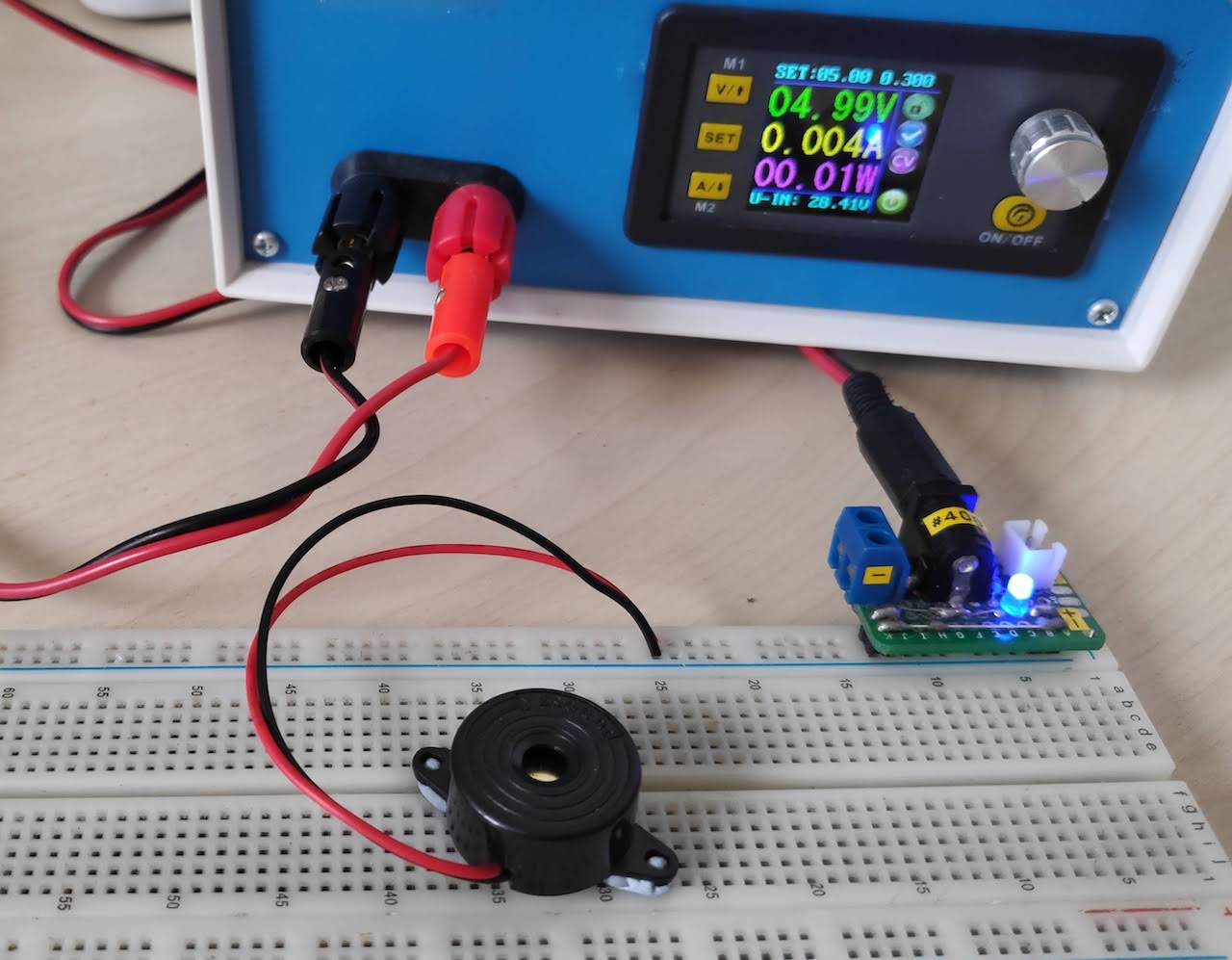
Alarms with Effects
Sometimes the piezo indicator circuit has a built-in effect, like for example this device which emits a beep every half a second or so.
- Sound Pressure Level 95 dB
- Rate Voltage: 12V DC
- Operating Voltage: 3 - 24V
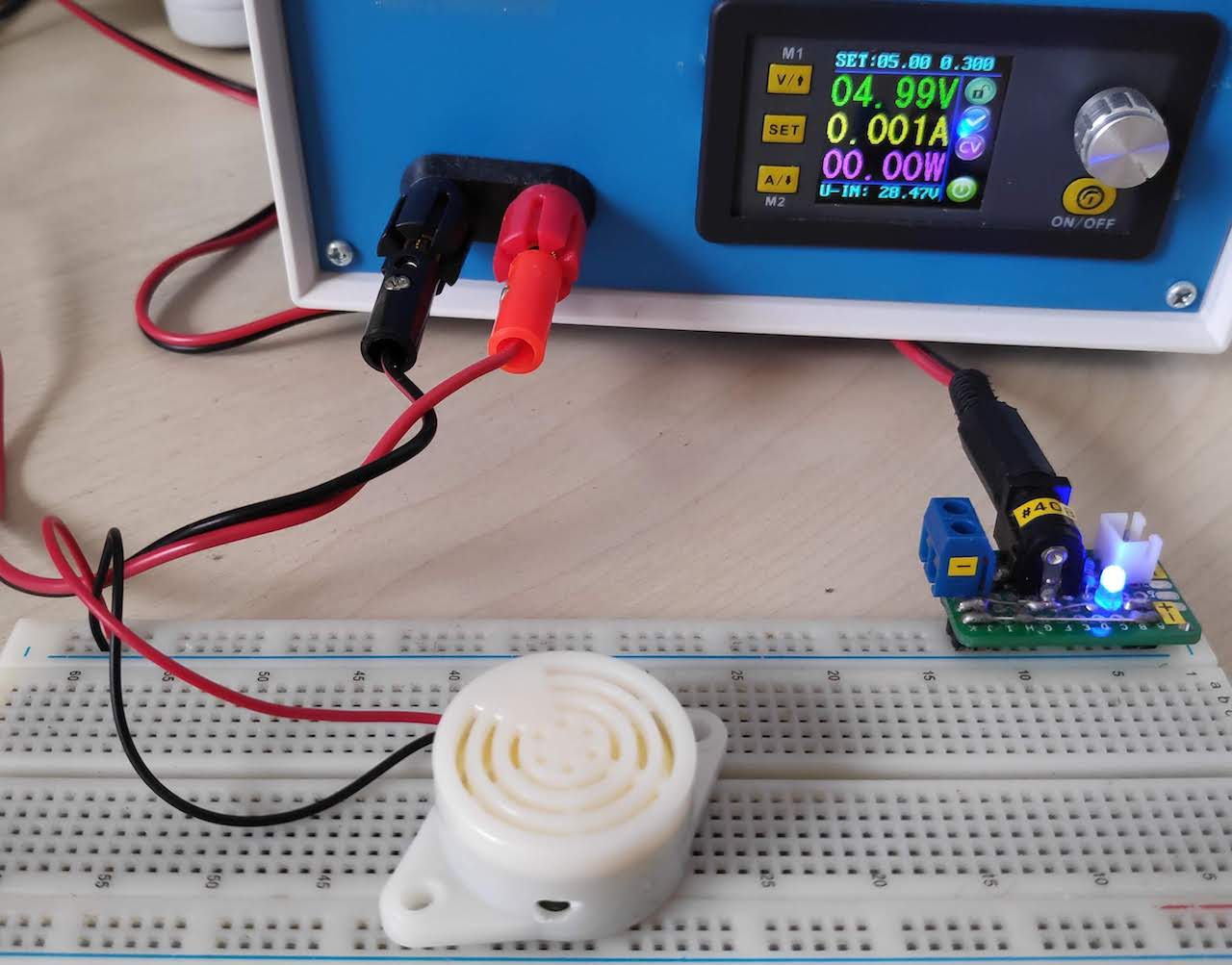
Driving Piezoelectric Transducers
Piezoelectric Transducers require an external oscillator to produce sound output.
A common circuit for turning a Piezoelectric disk into a buzzer uses a low-side switch. Plain piezo disks require a bypass resistor to dump the charge (else no sound will be produced). Additional resistance can be added to limit current and reduce volume.
In the following test circuit, I have a 555 astable oscillator with variable resistor to generate a pulse from about 152 Hz to about 10kHz
The 555 output switches a low-side 2N7000 n-channel FET.
I’ve selected a 10kΩ bypass resistor. Lower values start to attenuate the output.
A 2.2kΩ series resistor limits current without much impact on volume.
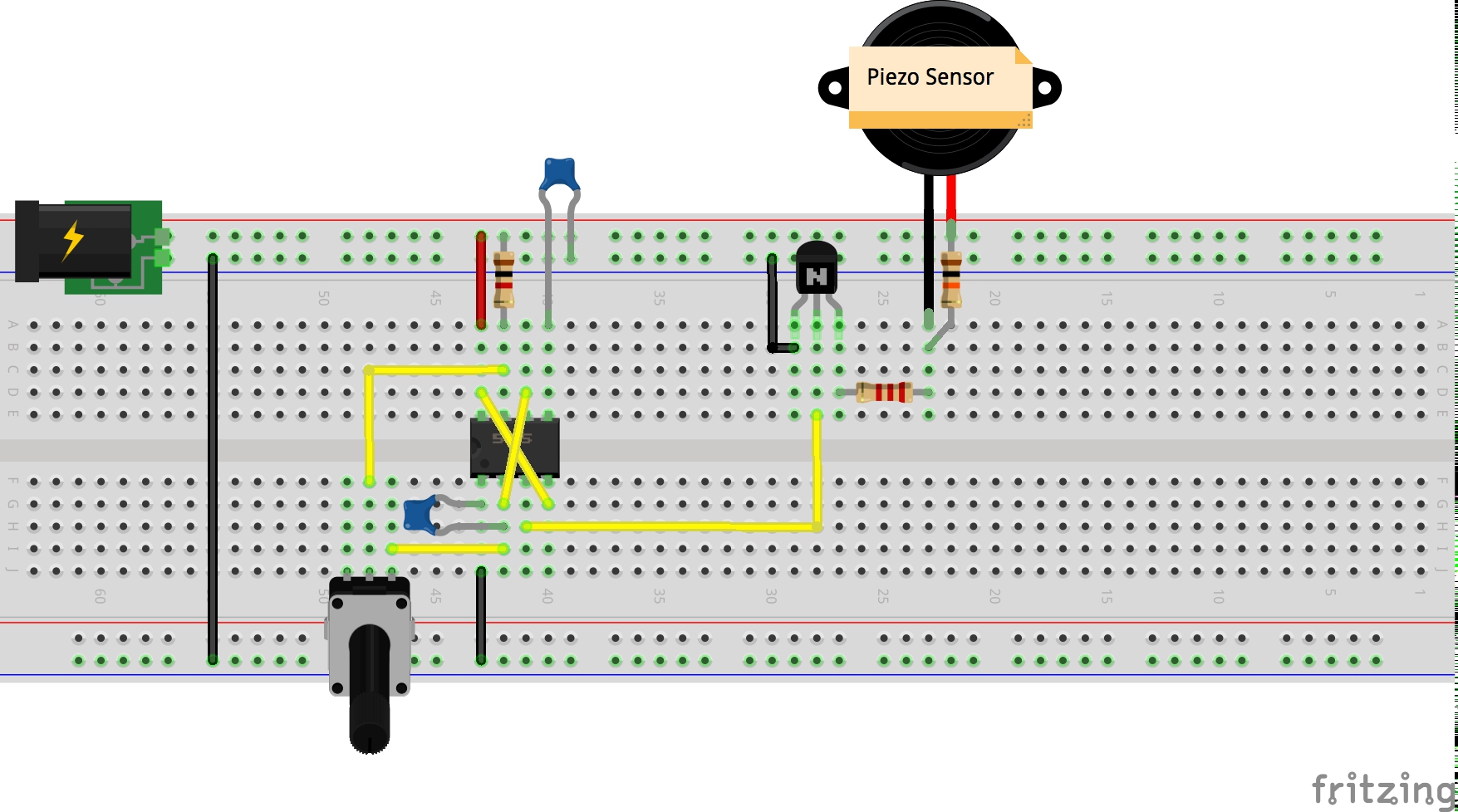
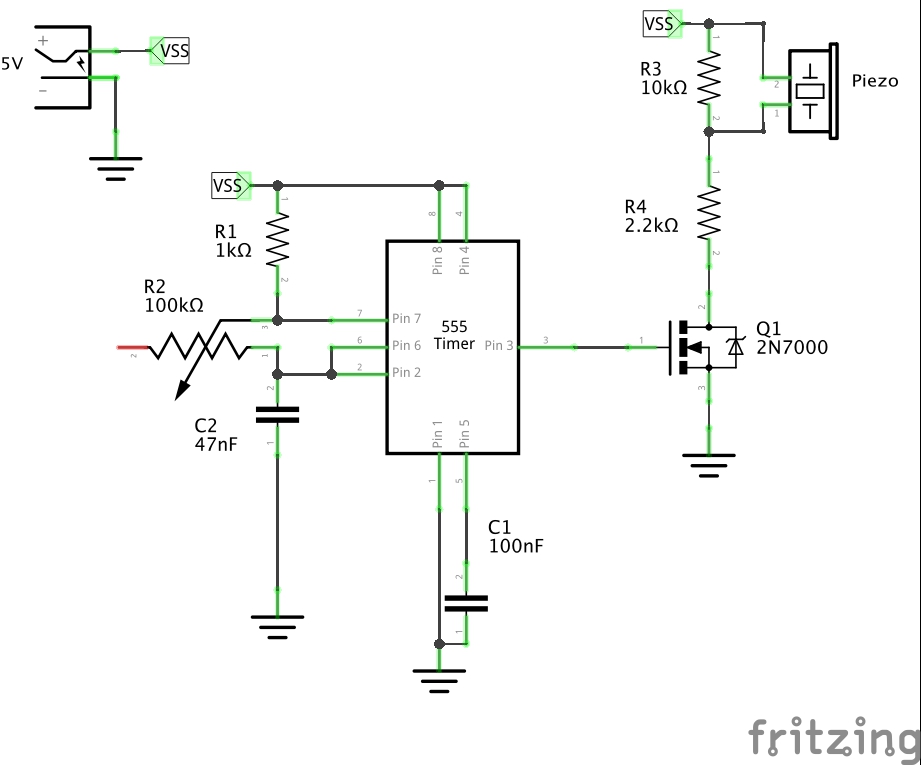

Credits and References
- Piezoelectric sensor - wikipedia
- Piezoelectric speaker - wikipedia
- Buzzer types - wikipedia
- Buzzer Basics - Technologies, Tones, and Drive Circuits



